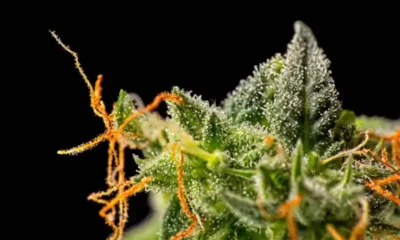Connect with us
Published
2 years agoon

It’s safe to assume, given the monumental shifts in cannabis policy, that beliefs around cannabis have also started to change over time. Namely, one new poll shows just how dangerous (or not) Americans still believe cannabis is in today’s world.
Rasmussen Reports surveyed 1,000 American adults from September 14-15 to learn more about their views on cannabis and drug misuse within the U.S., the perception of cannabis and the idea that it can pave the way to “more dangerous drugs,” Marijuana Moment reports.
Interestingly enough, a majority of respondents (59%) said that drug misuse, as a whole, is getting worse in the U.S., while 9% said the issue is improving. Overall, though, the majority of respondents said they believe cannabis is either “not very dangerous” or “not at all dangerous,” 28% and 29% respectively. Of the respondents with differing views, 23% said that cannabis is “somewhat dangerous” and 12% believed it is “very dangerous.”
Even the respondents who said drug misuse is getting worse in the U.S. largely believed that cannabis was not part of the problem (56% of respondents who said drug misuse is getting worse didn’t view cannabis as dangerous).
Though, Americans were split on whether or not cannabis is a gateway drug. Forty-six percent of respondents said it’s “very likely” or “somewhat likely” that cannabis consumption “leads to the use of more dangerous drugs. Another 46% said that it’s “not very likely” or “not at all likely” that cannabis use can create a gateway to harder drugs.
Of course, public perception is bound to shift along with the culture. Americans are being more open and honest about their cannabis consumption, too—For the first time earlier this year in Gallup polling, more Americans (16%) said they smoke cannabis than had smoked a tobacco cigarette (11%) in the past week.
Additionally, nearly 30% of adult respondents under the age of 35 told Gallup that they smoke cannabis, significantly higher than older age groups (16% of the 35-54 age group reported cannabis use, along with 14% of those aged 55 years and older). The National Institutes of Health also recently reported that more young adults used cannabis in 2021 than in any year prior, showing that the trend toward more cannabis smokers is driven by younger demographics.
Another Gallup poll also found that more than twice as many Americans think that cannabis has a positive impact on consumers and society as a whole than those saying the same about alcohol. The results were generally consistent with those of another poll released in March of this year, which found that more Americans believed it would be positive to switch to cannabis and drink less alcohol, versus those who believe substituting cannabis in would be a bad thing.
Regarding cannabis and its relationship with other drugs, multiple studies and analyses have recently found that legalization of recreational cannabis around the country has actually reduced the demand for opioids and prescription drugs, which have the potential to be expensive and highly addictive.
While many opponents of cannabis legalization have turned attention to young people, suggesting that legalization will lead to an uptick in use among youths, recent research has shown that cannabis legalization, in fact, does not lead to increased youth use. One survey from late 2021 actually found that youth cannabis use had “decreased significantly” in 2021, regardless of reform action happening throughout numerous states.
If the last decade of gradual reform, or the previous handful of decades navigating the often messy and detrimental impacts of the War on Drugs, didn’t already make it clear, this conversation is far from cut and dry. Though, venturing ahead as more states legalize cannabis, with many looking toward the federal government for that long-awaited sweeping legislation that finally reschedules cannabis, surveys like this are showing time and time again that Americans are ready for the next steps.


Despite City Efforts, Hemp Shops Posing as Dispensaries Prevail in Las Vegas


Cannabis Community, Investors React to DEA Decision To Reschedule


Georgia Governor Signs Bill Establishing Licensing Requirements To Grow Hemp


Study: Psilocybin Enhances Meditation


Ohio GOP Lawmakers Debate Adult-Use MJ Priorities, Eye June for Regulation Approval


Taylor Swift Puts Narcotics Into All of Her Songs on ‘The Tortured Poets Department’
